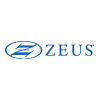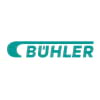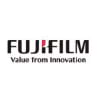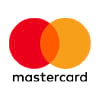Global Wearable Devices Market, By Product (Wrist-wear, Eyewear, Footwear, Neckwear, Body wear, Others), Type (Smart Textile, Passive, Active, Ultra-Smart, and Non-Textile), Industry (Consumer Products, Healthcare, Industrial and Others), End Users (Personal Users and Enterprises) – Industry Trends and Forecast to 2031.
Wearable Devices Market Analysis and Size
The wearable devices market is experiencing rapid growth, driven by technological advancements, increasing health consciousness among consumers, and the growing popularity of smartwatches and fitness trackers. The market is characterized by a wide range of wearable devices, including smartwatches, fitness trackers, smart clothing, and medical devices. These devices offer various functionalities, such as activity tracking, heart rate monitoring, GPS tracking, and notifications.
The global wearable devices market size was valued at USD 163.37 billion in 2023 and is projected to reach USD 643.84 billion by 2031, with a CAGR of 18.7% during the forecast period of 2024 to 2031. In addition to the insights on market scenarios such as market value, growth rate, segmentation, geographical coverage, and major players, the market reports curated by the Data Bridge Market Research also include depth expert analysis, patient epidemiology, pipeline analysis, pricing analysis, and regulatory framework.
Report Scope and Market Segmentation
|
Report Metric |
Details |
|
Forecast Period |
2024 to 2031 |
|
Base Year |
2023 |
|
Historic Years |
2022 (Customizable to 2016 - 2021) |
|
Quantitative Units |
Revenue in USD Billion, Volumes in Units, Pricing in USD |
|
Segments Covered |
Product (Wrist-wear, Eyewear, Footwear, Neckwear, Body wear, Others), Type (Smart Textile, Passive, Active, Ultra-Smart, and Non-Textile), Industry (Consumer Products, Healthcare, Industrial and Others), End Users (Personal Users and Enterprises) |
|
Countries Covered |
U.S., Canada, Mexico, Germany, France, U.K., Netherlands, Switzerland, Belgium, Russia, Italy, Spain, Turkey, Rest of Europe, China, Japan, India, South Korea, Singapore, Malaysia, Australia, Thailand, Indonesia, Philippines, Rest of Asia-Pacific, Saudi Arabia, U.A.E., South Africa, Egypt, Israel, Rest of Middle East and Africa, Brazil, Argentina, and Rest of South America |
|
Market Players Covered |
SAMSUNG (South Korea), Garmin Ltd. (U.S.), Huawei Technologies Co., Ltd. (China), Apple Inc. (U.S.), Sony Corporation (Japan), HTC Corporation (Taiwan), Fitbit, Inc. (U.S.), Xiaomi Global Community (China), ADIDAS AG (Germany), Nike, Inc. (U.S.), LG Electronics. (South Korea), Motorola Solutions, Inc. (U.S.), Fossil Group, Inc. (U.S.), Google LLC (U.S.), Polar Electro (Finland), Withings (France), Michael Kors (U.S.), CASIO AMERICA, INC. (U.S.), TomTom International BV (Netherlands), and ASUSTeK Computer Inc. (Taiwan) |
|
Market Opportunities |
|
Market Definition
Wearable devices, also known as wearables, are electronic devices worn on the body as accessories or implants. These devices are equipped with sensors and other technologies to collect data about the wearer's activities, health, and environment. Wearable devices can include smartwatches, fitness trackers, smart clothing, and medical devices such as continuous glucose monitors and smart insulin pumps. The data collected by wearable devices can be used to track fitness and health metrics, monitor chronic conditions, provide real-time feedback, and enable communication and interaction with other devices.
Wearable Devices Market Dynamics
Drivers
- Increasing Health Consciousness
The rising health consciousness among consumers is a significant driver of the wearable devices market. With growing awareness about the importance of maintaining health and fitness, consumers are seeking tools that can help them track and improve their overall well-being. Wearable devices that can monitor health metrics such as heart rate, sleep patterns, and physical activity are in high demand as they enable users to make informed lifestyle choices. This drives the adoption of wearable devices as essential tools for managing health and fitness goals.
- Remote Patient Monitoring
The COVID-19 pandemic has accelerated the adoption of remote patient monitoring solutions, including wearable medical devices. With the need to reduce in-person interactions and minimize the risk of exposure to the virus, healthcare providers are increasingly turning to wearable devices to monitor patients' health remotely. These devices allow for continuous monitoring of vital signs and other health metrics, enabling healthcare providers to detect early signs of deterioration and intervene promptly. The pandemic has highlighted the significance of remote patient monitoring in enhancing patient results and decreasing healthcare expenses, driving the adoption of wearable medical devices in healthcare settings.
Opportunities
- Growing Demand in the Sports and Fitness Industry
Athletes and fitness enthusiasts rely on wearable devices to track their workouts, monitor their progress, and achieve their fitness goals. There is a significant opportunity for wearable device manufacturers to innovate and develop advanced devices that provide accurate and real-time data, helping individuals optimize their training and improve their overall performance. The sports and fitness industry represents a lucrative opportunity in the market for wearable devices, driven by the growing demand for fitness trackers, smartwatches, and other devices that can enhance athletic performance and fitness monitoring.
- Rising Prevalence in Fashion
Wearable devices are increasingly becoming fashion statements and lifestyle accessories, especially among younger consumers who value style and functionality. There is a growing trend of integrating technology seamlessly into everyday clothing and accessories, creating opportunities for wearable device manufacturers to collaborate with fashion brands and designers. By focusing on aesthetics and design, wearable device manufacturers can appeal to fashion-conscious consumers and differentiate their products in a competitive market, creating new opportunities for the market.
Restraints/Challenges
- Data Privacy and Security Concerns
With wearable devices collecting and storing sensitive health and personal data, ensuring the privacy and security of this data is crucial. Consumers are increasingly concerned about how their data is being used and protected, and any breach of privacy could lead to a loss of trust in wearable device manufacturers. Data privacy and security are significant challenges in the market.
- Interoperability and Compatibility Issues
The lack of standardization means that devices from different manufacturers may not work together or share data effectively. This limits wearable devices' overall usability and functionality and can frustrate consumers who may have invested in multiple devices. Interoperability and compatibility challenges hinder the seamless integration of wearable devices with other devices and platforms.
This wearable devices market report provides details of new recent developments, trade regulations, import-export analysis, production analysis, value chain optimization, market share, impact of domestic and localized market players, analyses opportunities in terms of emerging revenue pockets, changes in market regulations, strategic market growth analysis, market size, category market growths, application niches and dominance, product approvals, product launches, geographic expansions, technological innovations in the market. To gain more info on the wearable devices market contact Data Bridge Market Research for an Analyst Brief, our team will help you take an informed market decision to achieve market growth.
Recent Developments
- In March 2023, Samsung, in collaboration with Google and Qualcomm, announced its joint efforts on an upcoming mixed-reality headset
- In October 2022, Google unveiled the Pixel Watch, a smartwatch priced at USD 349 for the Wi-Fi-only version and USD 399 for the cellular variant. This price range is between USD 50 and USD 100 lower than the comparable versions of the Apple Watch Series 8
- In August 2022, Fitbit Inc. revealed the introduction of its new range of watches, which includes the Sense 2, Inspire 2, and Versa 4 models
Global Wearable Devices Market Scope
The wearable devices market is categorized into four notable segments which are based on the basis of product, type, industry, and end users. The growth amongst these segments will help you analyze meagre growth segments in the industries and provide the users with a valuable market overview and market insights to help them make strategic decisions for identifying core market applications.
Product
- Wrist-Wear
- Eyewear
- Footwear
- Neckwear
- Body Wear
- Others
Type
- Smart Textile
- Passive
- Active
- Ultra-Smart
- Non-Textile
Industry
- Consumer Products
- Healthcare
- Industrial
- Others
End Users
- Personal Users
- Enterprises
Wearable Devices Market Regional Analysis/Insights
The wearable devices market is analyzed and market size insights and trends are provided by country, product, type, industry, and end users as referenced above.
The countries covered in the market are U.S., Canada, Mexico, Germany, France, U.K., Netherlands, Switzerland, Belgium, Russia, Italy, Spain, Turkey, Rest of Europe, China, Japan, India, South Korea, Singapore, Malaysia, Australia, Thailand, Indonesia, Philippines, Rest of Asia-Pacific, Saudi Arabia, U.A.E., South Africa, Egypt, Israel, Rest of Middle East and Africa, Brazil, Argentina, and Rest of South America.
North America is expected to dominate the market due to high technology adoption and the rapid availability of newly released items. A growing demand is for devices that promote health, facilitate preventive treatment, and manage ongoing ailments. According to the National Library of Medicine, 30% of Americans use wearable medical technology.
Asia-Pacific is expected to witness significant growth due to the increasing number of vendors offering products with competitive features. The increasing demand from various customer groups allows manufacturers to lower product prices while increasing production volumes. The demand for wearable technology in China is also expected to rise due to the decreasing costs of smartphones.
The country section of the report also provides individual market impacting factors and changes in regulation in the market domestically that impacts the current and future trends of the market. Data points like down-stream and upstream value chain analysis, technical trends and porter's five forces analysis, case studies are some of the pointers used to forecast the market scenario for individual countries. Also, the presence and availability of global brands and their challenges faced due to large or scarce competition from local and domestic brands, impact of domestic tariffs and trade routes are considered while providing forecast analysis of the country data.
Healthcare Infrastructure Growth Installed base and New Technology Penetration
THE wearable devices market also provides you with detailed market analysis for every country growth in healthcare expenditure for capital equipment, installed base of different kind of products for wearable devices market, impact of technology using life line curves and changes in healthcare regulatory scenarios and their impact on the wearable devices market. The data is available for historic period 2011-2021.
Competitive Landscape and Wearable Devices Market Share Analysis
The wearable devices market competitive landscape provides details by competitor. Details included are company overview, company financials, revenue generated, market potential, investment in research and development, new market initiatives, global presence, production sites and facilities, production capacities, company strengths and weaknesses, product launch, product width and breadth, application dominance. The above data points provided are only related to the companies' focus related to the market.
Some of the major players operating in the market are:
- SAMSUNG (South Korea)
- Garmin Ltd. (U.S.)
- Huawei Technologies Co., Ltd. (China)
- Apple Inc. (U.S.)
- Sony Corporation (Japan)
- HTC Corporation (Taiwan)
- Fitbit, Inc. (U.S.)
- Xiaomi Global Community (China)
- ADIDAS AG (Germany)
- Nike, Inc. (U.S.)
- LG Electronics (South Korea)
- Motorola Solutions, Inc. (U.S.)
- Fossil Group, Inc. (U.S.)
- Google LLC (U.S.)
- Polar Electro (Finland)
- Withings (France)
- Michael Kors (U.S.)
- CASIO AMERICA, INC. (U.S.)
- TomTom International BV (Netherlands)
- ASUSTeK Computer Inc (Taiwan)
SKU-





 Forecast Period
Forecast Period  Market Size (Base Year)
Market Size (Base Year)  Market Size (Forecast Year)
Market Size (Forecast Year) CAGR
CAGR










